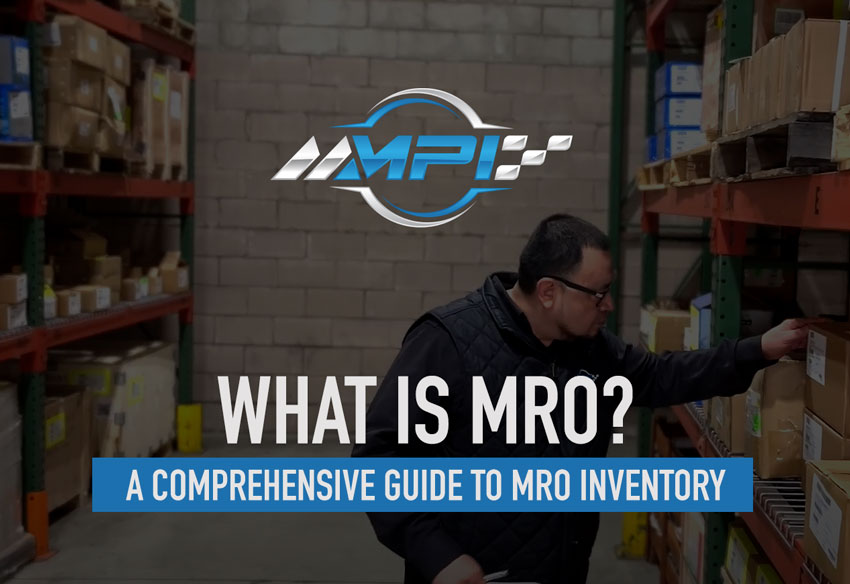Efficient maintenance and operations are paramount in numerous industries, ensuring seamless and uninterrupted workflows. An integral facet of sustaining these operations involves the effective management of Maintenance, Repair, and Operations (MRO) inventory. This article aims to provide a thorough guide to MRO inventory, expounding its significance, and delineating best practices for its oversight.
Understanding MRO Inventory
Definition and Scope
MRO inventory encompasses an assortment of requisites indispensable for an organization’s maintenance, repair, and operations. This assemblage encompasses spare parts, consumables, tools, and other indispensable supplies. Divergent from raw materials or finalized goods inventory, MRO inventory is explicitly tailored to sustain ongoing operations and maintain equipment in optimal working condition.
Key Objectives of MRO Inventory Management
Effective MRO inventory management primarily seeks to curtail downtime, economize costs, and ensure equipment availability. Nevertheless, the management of MRO inventory is not without its complexities, including issues like obsolescence, stockouts, and overstocking. Consequently, organizations must institute sound strategies for optimizing their MRO inventory management.
Importance of MRO Inventory Management
Maintenance and Repair Operations
MRO inventory assumes an indispensable role in underpinning maintenance and repair activities. The availability of the right spare parts and supplies ensures minimal equipment downtime, expeditious repairs, and prompt resumption of operations.
Cost Control and Efficiency
Prudent management of MRO inventory can yield substantial cost reductions. Through the implementation of efficient inventory control practices, organizations can pare down inventory holding costs, mitigate the risks of overstocking or stockouts, and eliminate unnecessary procurements. This, in turn, translates into an ameliorated operational efficiency and enhanced financial performance.
Effective MRO Inventory Management Practices
Inventory Classification and Segmentation
To effectuate efficient MRO inventory management, it is imperative to categorize items contingent on their criticality, frequency of use, and lead time. This stratification empowers organizations to stipulate fitting inventory levels, institute reordering protocols, and judiciously allocate resources.
Demand Forecasting and Inventory Planning
Accurate demand forecasting is pivotal to the successful administration of MRO inventory. By harnessing statistical models, scrutinizing historical data, and fostering collaboration with suppliers, organizations can optimize inventory planning, ensuring that requisites are accessible when needed, thus minimizing surplus inventory and stockouts.
Vendor Management and Relationships
Robust vendor partnerships assume a pivotal role in efficient MRO inventory management. By evaluating vendors, monitoring their performance, and strategically sourcing requisites, organizations can augment supply chain efficiency, truncate lead times, and negotiate advantageous terms. This guarantees a dependable supply of MRO items while concurrently mitigating expenses.
Inventory Tracking and Technology
Modern technologies, such as inventory management software and Radio Frequency Identification (RFID), confer substantial benefits for tracking MRO inventory. Real-time visibility, automation, and data analytics empower organizations to monitor inventory levels, trace usage patterns, and arrive at informed decisions. The exploitation of technology streamlines processes, heightens precision, and amplifies overall inventory management.
Future Trends and Innovations in MRO Inventory Management
This editorial explores emerging technologies and trends that are molding the future of MRO inventory management. Advancements like predictive maintenance, the Internet of Things (IoT), machine learning, and blockchain are ushering in novel prospects for enhancing efficiency, curtailing costs, and elevating inventory control in MRO operations.
Conclusion
Efficient MRO inventory management assumes a pivotal role in upholding seamless operations, curtailing downtime, and managing costs. By inculcating best practices, including inventory classification, demand forecasting, vendor management, and technology utilization, organizations can optimize their MRO inventory.
The future of MRO inventory management harbors promising advancements that will further enhance operational efficiency and cost-effectiveness. By embracing these strategies and innovations, organizations can attain enhanced control over their MRO inventory, fostering success in their maintenance and operations endeavors.

Resourceful and innovative Marketing Pro, with 20+ years of progressive experience in the marketing and creative technology industry. Responsible for digital and traditional marketing efforts that promotes brand awareness, increases engagement, and drives revenue.



















